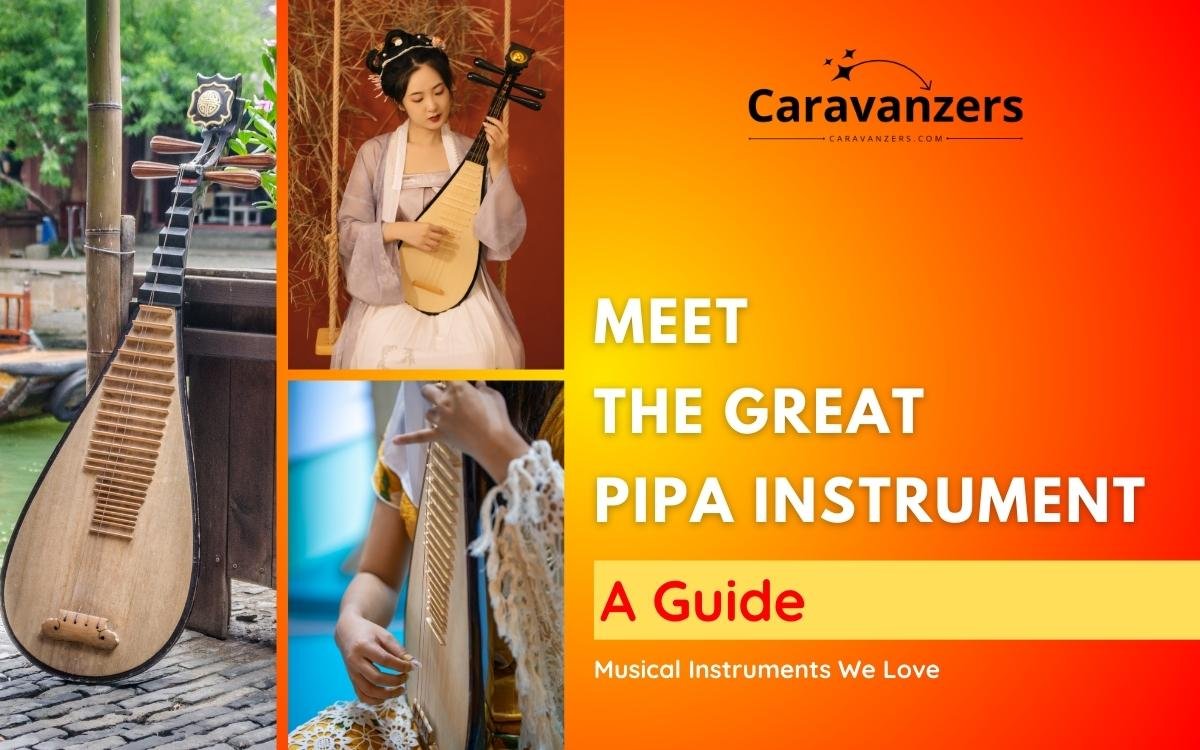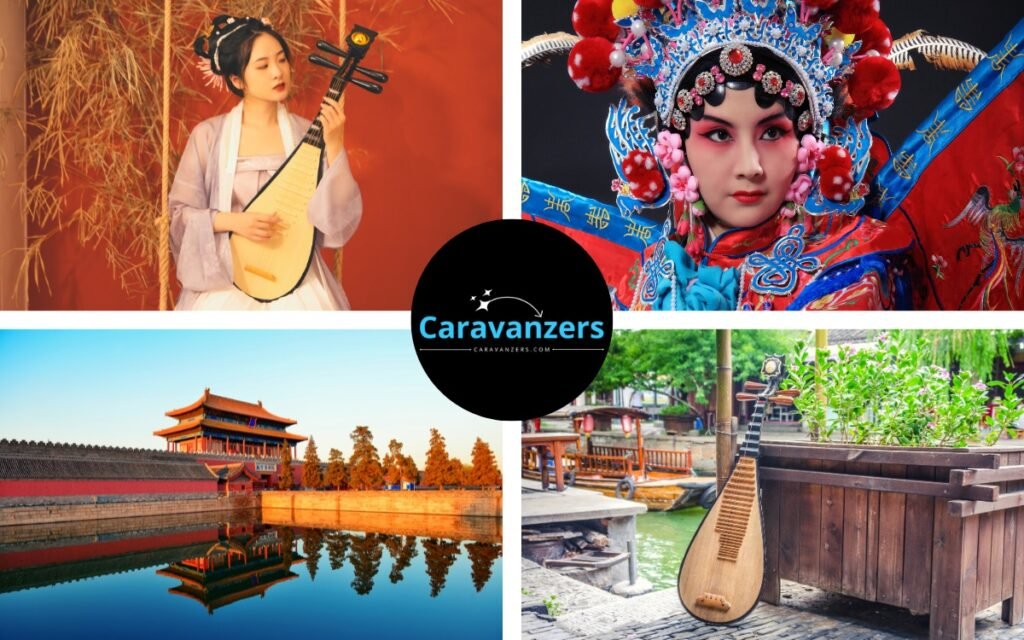
Pipa, an ancient Chinese musical instrument, has been enthralling audiences for more than two millennia.
China boasts a vast and diverse musical legacy that spans millennia. Its history showcases an assortment of instruments that will please any music enthusiast.
One of the most sought-after instruments in this array is the pipa. This is a pear-shaped body and four strings and is played by plucking them.
In this guide, I will delve into the pipa’s history, its music, and where you can acquire this splendid instrument.
Chinese Instruments

China boasts a musical heritage that runs deep into its ancient past, spanning thousands of years.
Even in present times, the country is home to a diverse array of instruments that will strike a chord with any music lover.
From the haunting melodies of the zither to the soulful strains of the guitar, violin, flute, and trumpet, China’s rich musical tradition is sure to stir your emotions and leave you spellbound.
Within these categories, some of the most popular Chinese instruments include the guqin, erhu, pipa, dizi, sheng, and yangqin.
The guqin, for example, is a seven-stringed instrument that has been an essential component of Chinese culture for over three millennia, lauded for its delicate sound.
The erhu, a two-stringed bowed instrument, is frequently used in solo performances and ensembles.
The pipa is a four-stringed plucked instrument often utilized in Chinese opera, while the dizi is a transverse flute commonly played in Chinese folk music.
The sheng is a mouth-blown free reed instrument commonly used in traditional Chinese music, and the yangqin is a hammered dulcimer that is a common feature in Chinese orchestras.
Pipa Instrument

The pipa, a magnificent Chinese instrument, has been captivating listeners for over two thousand years.
Its pear-shaped body and four plucked strings produce a bright, clear tone. Its tone is similar to a “crystalline” or “bell-like” sound.
The pipa’s expressive plucking technique allows for conveying a wide range of emotions and moods. This makes it perfect for solo playing, accompanying singing, or ensemble performances in traditional Chinese music.
The soundboard is made from paulownia wood, while the neck and pegbox are made from sandalwood or other hardwoods, giving it a unique and stunning appearance.
As a type of lute belonging to the plucked string instrument family, the pipa’s strings are attached to a neck that is separate from the instrument’s body.
As a traveler, experiencing the sound of this remarkable instrument can evoke a wide range of emotions. Naturally, this can create lifelong memories of the beauty of Chinese music.
Pipa Music
If there’s a musical instrument that’s truly Chinese, it’s got to be the pipa.
Just like with other instruments, there are classical songs that use the pipa, and there are regional variations as well.
One popular song that many musicians play is “Autumn Moon Over Han Palace,” which hails from Shandong in the north.
The connection to the Han palace is significant here, as legend has it that a Han princess who was living abroad actually invented the pipa!
Musicians adore the pipa for a multitude of reasons, and it has gained immense popularity in Chinese circles.
First of all, the pipa possesses a unique sound that is unmistakable and has a broad range of expressive capabilities.
The pipa also has a rich and extensive history in Chinese music, and it is often associated with traditional Chinese culture. As such, it serves as an essential symbol of Chinese musical heritage and identity.
Finally, mastering the pipa is a challenging feat that requires high levels of skill and dedication. This makes it particularly alluring to musicians who are seeking new challenges and want to broaden their musical horizons.
Pipa for Sale
Are you on the hunt for a pipa? Well, fear not, as there are multiple ways to get your hands on this traditional Chinese musical instrument.
The first and probably the easiest way is to look online. Numerous online retailers specialize in traditional Chinese instruments, and you can easily find a wide range of pipas to choose from.
You can trust the reviews or even ask for recommendations from other musicians who play the pipa.
Another option is to visit Chinatowns in cities like San Francisco or New York. These areas have specialty music stores that cater to Chinese musicians and usually have a variety of traditional instruments, including the pipa.
These stores might have staff who are knowledgeable about the instrument and can help you make the right choice.
Lastly, you can purchase a pipa through large music stores that carry instruments from around the world.
Although they might not have as broad a selection as specialty retailers, they may still have a few models to choose from, and you can often take advantage of discounts, including free shipping.
Final Thoughts
As you saw throughout the article, the pipa is a fascinating instrument.
From its origins to its musical significance, I have delved into every aspect of this beautiful instrument.
Furthermore, I have provided information on where you can acquire this marvelous piece.
In case you decide to purchase it, I would love to know your feedback!
Li Xiu Ying is a travel writer and is the author of Beijing Travel. She writes about China for Caravanzers.
Follow us on Pinterest.

2 Comments
Comments are closed.